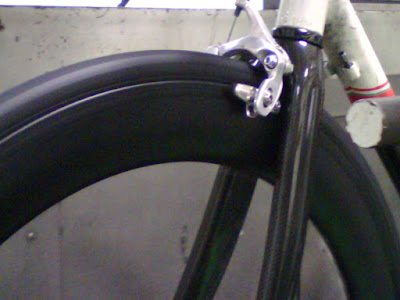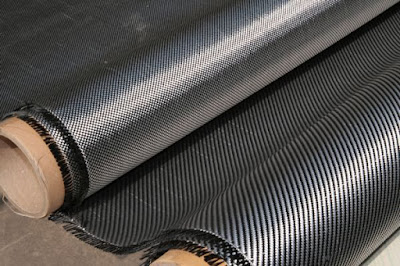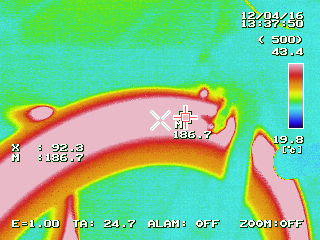If you’ve been researching carbon clinchers, you’ve likely come across a thread on a forum where someone has melted their wheels while braking. That’s a scary thought. Do all carbon clinchers melt? The quick answer is no.

We’ve done a lot a testing to ensure our new Carbon Clinchers pass safety standards so you won’t have an issue with your wheels. We’ve even conducted some of our own testing above and beyond the ISO standards. If you are interested, this article goes over some background on carbon clinchers and then discusses our testing.
A Bit of Brake Track History and Background
Before we discuss our testing, I think it makes sense to talk about the history of a carbon fiber brake surface. Thinking about it quickly, it seems like it should be an easy concept. Replace the traditional aluminum brake track with a carbon fiber brake track. Well, it’s not that easy. Here’s why.
Friction our Friend and Foe
In order to stop when applying the brakes on a bicycle, you need friction between the brake pads and the rim. The force of friction absorbs the bicycles kinetic energy and brings it to a stop. The only down side of this, is that the absorbed kinetic energy is transferred into heat. Stopping when you need to is good, but the resultant heat can be bad.
Aluminum Braking Surface
When using an aluminum rim, we are not concerned about heat because the braking temperatures do not reach the melting point of aluminum. 6061-T6 – a common aluminum used for rims – melts at 652 degrees celsius. Brake heat rarely exceeds 400 degrees celsius.
Carbon Fiber Brake Surface
With a carbon fiber rim things are not so simple. To better understand why, we first have to look at how carbon fiber is made.
Carbon Fiber Material
The first component of carbon fiber is the carbon fiber material. It is similar in structure to fiberglass. It comes in sheets and is woven together. By itself, it not much more than a fancy fabric.

Epoxy Resin
The second component of carbon fiber is the epoxy resin. This is a glue like substance that is used to cover the carbon fiber material. When heat is applied the resin sets and hardens. Combining these two components together, makes the finished carbon fiber used in bicycle wheels.

Carbon fiber material science is an extremely difficult topic. In addition, the number of options that exist when selecting the carbon fiber material, and an epoxy resin, are mind blowing. There are also numerous ways to set carbon fiber. Mold types, ramp cycles, etc., the topic is very diverse.
With all of the options that exist, we can easily get ourselves into trouble if we do not pick the right epoxy resin. Epoxy resins have a Glass Transition Temperature (Tg). The Tg is the temperature where the polymer transitions from a hard glassy material,
to a soft rubbery material. If you reach the Tg of an epoxy resin when braking, you have a big problem.
Early epoxy resins were able to create carbon fiber that was either tough, or good at handling heat. Finding a resin that had both characteristics was very difficult to do. If you’ve ever seen a melted rim, it’s a clear sign that the Tg of the resin was too low. Epoxy resins have advanced a lot since then, and modern resins have the ability to be both tough, and good at handling heat.
These new resins are much more expensive and can be difficult to obtain. This is why you still see rims melting today. Factories looking to cut corners, are still using the old resins. This is the reason why working with reputable factories is critically important.
Once you have selected the correct epoxy resin, the next step is selecting a brake pad that is designed to work with that resin. Using the wrong brake pad with your resin system can damage the brake tracks, or effect the braking performance of the wheel. We supply brake pads with our wheels that must be used to keep your warranty valid. They have been designed to prevent heat build up/damage, and to optimize braking performance. When set up properly, we feel no difference in the braking performance of our carbon wheels when compared to our aluminum rim models.
Our Testing Protocol for our Carbon Clinchers
ISO has a predefined set of tests for bicycle safety. To start our testing, we looked at the most recent ISO standard. The standard states that a wheel should have the brakes cycled 1,000 – 3,000 times in three second intervals. This means the brakes are on for three seconds and then released for three seconds. This process is repeated 1,000 – 3,000 times. We chose to cycle the brakes 3,000 times. Here are the specifics of the test.
– Test Speed: 12.5 km/h ± 5 %
– Test Load: 100 kg, with deceleration efficiency < 2.20 m/s2 ±10 %
– Testing Cycle: 3,000 Cycles of brakes on for three seconds and off for three seconds
– Temperature Measurement Source: Inferred Camera
We passed this test without any issues. We are currently waiting for a video of the test and will have a more thorough walk through of the test soon. The image below is from the test.

Additional Testing
We wanted to push the wheels to an unrealistic limit so we decided to lock the brakes on while descending Mount Charleston in Las Vegas. The tests ran for 25 minutes and required an output wattage of over 200 watts for a good portion of the descent. At the end of the test there was no damage to the braking surface.
We hope you have enjoyed this blog article, and that you have a better understanding of our carbon braking system. Stay tuned for the upcoming blog article that discusses our testing in more detail. If you have any questions at all, please do not hesitate to contact us.

Co-founder at FLO Cycling. Jon manages the day to day operations and acts as the lead engineer for all FLO products.
